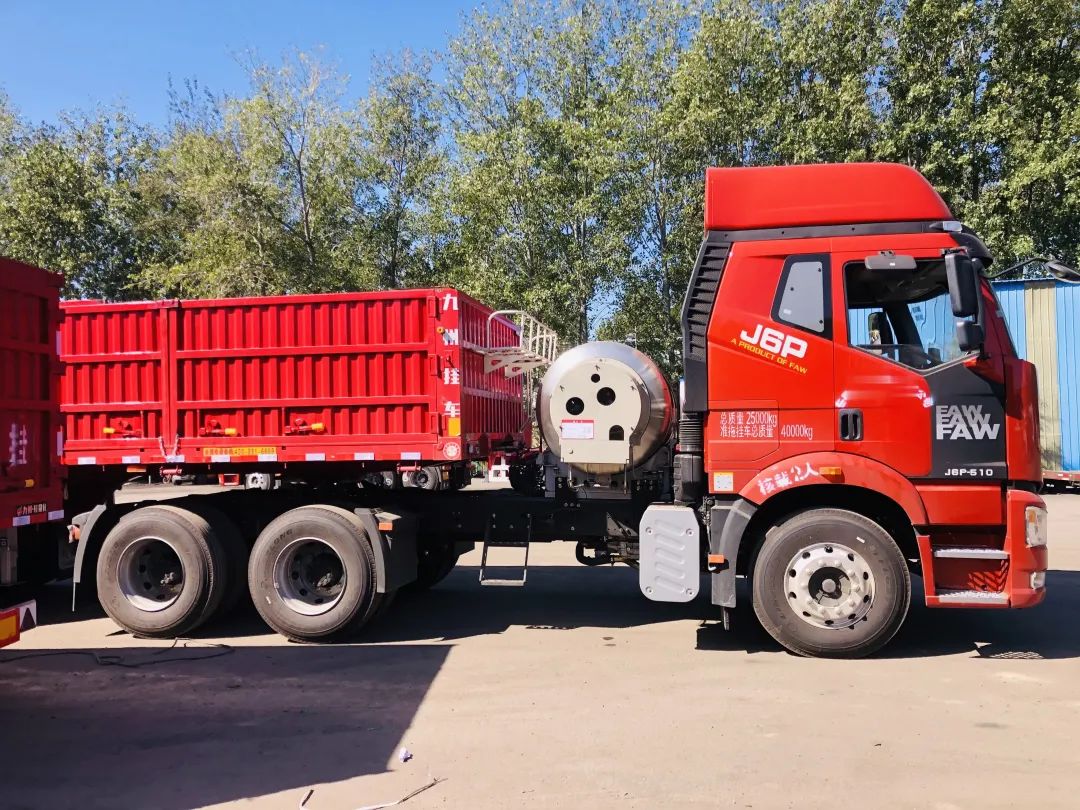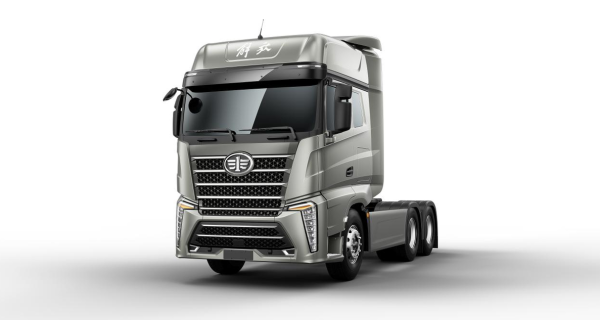The vast northwestern region of China is characterized by diverse landscapes and highly variable climate. Mr. Gao, a driver from Liaocheng, Shandong, says that nowadays he hardly feels any apprehension when facing the complex and changing environment and road conditions of the Northwest. His past experiences reassure him that his FAW J6P LNG heavy-duty truck can handle the job. Even when navigating winding mountain roads, he consistently delivers coal to its destination safely and on time.

With diesel prices remaining high, the fleet manager at Mr. Gao’s logistics company has decided to transition to LNG heavy-duty trucks. Since August of last year, the company initially purchased five FAW J6P LNG heavy trucks. Based on driver feedback regarding fuel efficiency, reliability, and overall performance, the company has since expanded its fleet to 20 units.
Currently, coal transport rates on dedicated routes from Shenmu City to Tangshan are low, and intense competition has pushed Mr. Gao’s fleet to expand into routes to Xinjiang. “Xinjiang’s challenging climate and road conditions make high-horsepower LNG heavy-duty trucks the top choice,” he explains. After comparing mainstream models on the market, the company ultimately opted for the 510-horsepower FAW J6P LNG heavy-duty truck.
From Naomao Lake to Xining and Lanzhou, the one-way distance is typically over 1,500 kilometers. The fleet’s initial plan is to make six round trips per month, with each one-way trip averaging around 30 hours. Along the route, drivers must navigate vast desert terrain, rugged mountain roads, and other challenging conditions, demanding higher power output from the vehicles.
However, the FAW J6P, equipped with the FAW Power CA6SM4 LNG engine, delivers a maximum power of 510 horsepower and a peak torque of 2500 Nm. This outstanding power performance easily overcomes the challenges of complex road conditions, enabling high efficiency on demanding routes. “Entering autumn, the Northwest begins to experience strong winds, meaning the vehicle not only has to handle various terrains but also adapt to constantly changing weather. Especially on sections like Qilian Mountain and from Hami to Naomao Lake, high-horsepower LNG heavy trucks have a clear advantage. A light press on the accelerator while going uphill enables easy overtaking, and in terms of power, it even surpasses our previous diesel trucks,” Mr. Gao commented, offering a fair assessment based on the complex transport environment.
The average fuel consumption for this fleet is maintained around 28 kg per 100 kilometers, with potential to reduce by another 1–1.5 kg if strong winds are absent. In comparison, the previous diesel heavy-duty trucks had an average fuel consumption of 34–36 liters per 100 kilometers. Even with LNG prices currently rising to about 5 yuan per kg, overall calculations show a cost saving of 0.4 yuan per kilometer over diesel. Based on an average of 20,000 kilometers per month, each truck saves at least 8,000 yuan in fuel costs monthly. Mr. Gao observes that natural gas prices tend to rise each autumn and winter, but the significant reduction in fuel costs justifies the company’s decision to transition from diesel to LNG.



